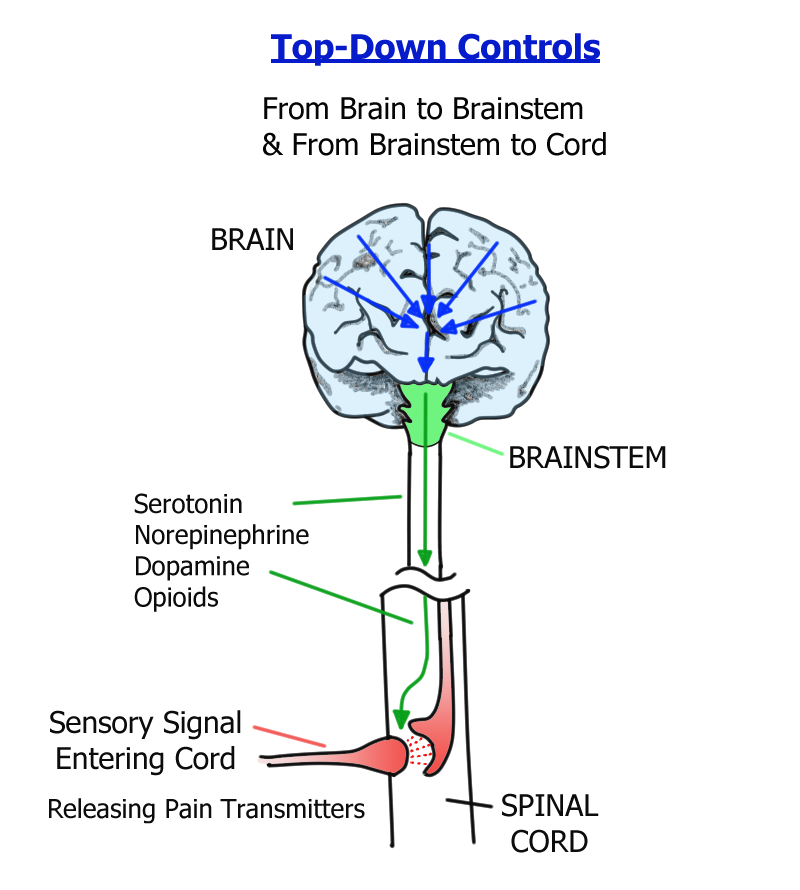Brainstem Overload
The brainstem performs a key role in the Top-Down pain-inhibitory system. As shown in the diagram below, this mid-level player above the cord and beneath the brain uses serotonin-, norepinephrine-, dopamine-, or opioid-transmitting pathways to shut down pain.

The Top-Down system can intercept the incoming information before it is relayed to the second set of neurons at the entrance gate to the cord. Alternatively, the brainstem can halt or minimize the signals before they reach your brain. With inhibitory transmitters in short supply (serotonin, norepinephrine and dopamine), researchers suspect this system is underperforming in fibromyalgia.
If the signals pass beyond the brainstem, the brain can opt to send down reinforcements. However, as you will read in the next article, the brain is malfunctioning in fibromyalgia patients.
With a Bottom-Up system augmenting the sensory signals traveling up the cord, this leads to an overloaded brainstem in people with fibromyalgia. Indeed, imaging studies show that the communications from the brainstem down to the cord are intensified in people with fibromyalgia. Also, the greater the activation, the higher the patients’ pain score. This confirms that the brainstem is working overtime, but it is still failing to reign in your pain.
In addition to not controlling your discomfort, the activated brainstem may also be tied to your body’s stress response system and increases in the arousal network. More research is needed, but a hyperactive brainstem could represent the link between pain, the autonomic nervous system’s inability to control stress, and chronic sleep disruption.
Intuitively, chronic pain can make you feel stressed out and unable to sleep. However, an overburdened brainstem could provide a physiological basis that ties these symptoms together.
What can you do to boost the action of your Top-Down control system and help your brainstem work more efficiently? Medications that solely increase serotonin in the CNS tend to be ineffective at treating pain. But when serotonin and norepinephrine are increased simultaneously, pain relief can sometimes be achieved (e.g., duloxetine, Savella or cyclobenzaprine). Also, adding a mild opioid boosting drug, such as tramadol (which also increases both serotonin and norepinephrine) could be beneficial as well.